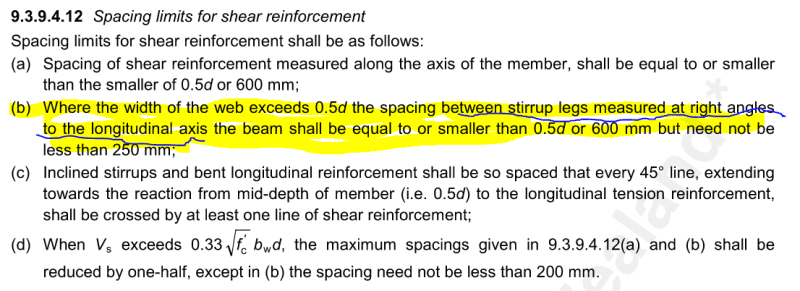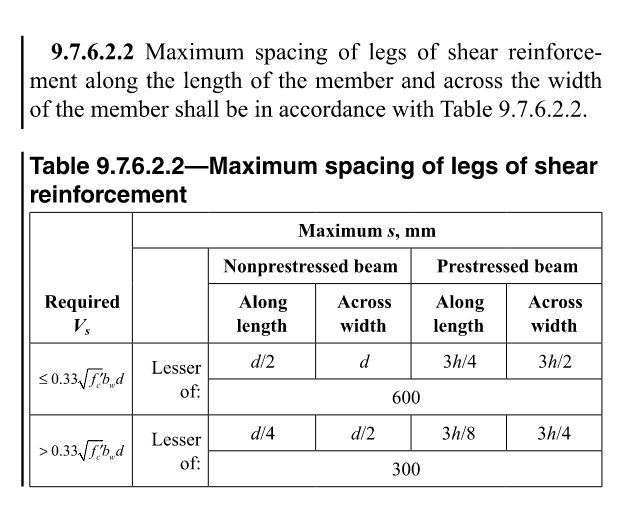SBRC
Structural
- Dec 7, 2017
- 2
Greetings,
AS per this thread link
Majority of engineers refer to ACI 318, 11.4.5 and state that transverse stirrup spacing shall be as prescribed in 11.4.5.1.

In my opinion, ACI speaks about spacing of stirrups perpendicular to longitudinal axis of member which is vertical axis and it specify vertical stirrups spacing(S) not any horizontal spacing of stirrup.
Lateral spacing is of no concern since we calculate "Av" which itself depends on width of beam"bw" More wider beam will need more Av.
Would any engineer shed some light over it?Is my understanding Correct?
AS per this thread link
Majority of engineers refer to ACI 318, 11.4.5 and state that transverse stirrup spacing shall be as prescribed in 11.4.5.1.

In my opinion, ACI speaks about spacing of stirrups perpendicular to longitudinal axis of member which is vertical axis and it specify vertical stirrups spacing(S) not any horizontal spacing of stirrup.
Lateral spacing is of no concern since we calculate "Av" which itself depends on width of beam"bw" More wider beam will need more Av.
Would any engineer shed some light over it?Is my understanding Correct?



![[ponder] [ponder] [ponder]](/data/assets/smilies/ponder.gif) ....... KISS.
....... KISS.